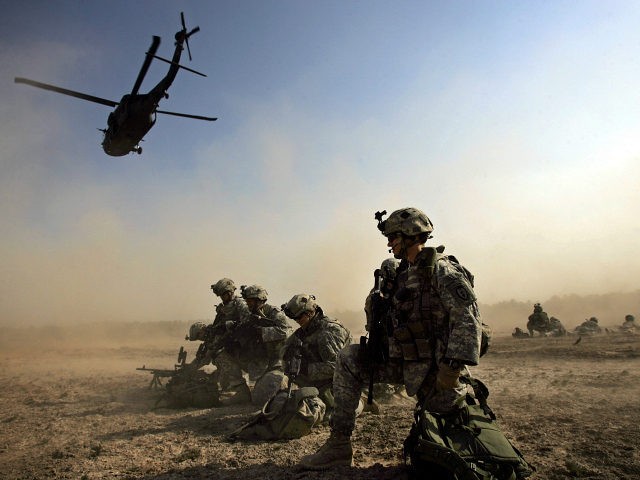President Trump has authorized military commanders to reset the complex system of troop limits in the Iraqi and Syrian theaters. The Pentagon announced no immediate changes, but supporters of Trump’s decision say it will sweep away a veil of political obfuscation President Obama placed over troop deployments.
To put it bluntly, the Obama administration did not honestly report how many U.S. “boots on the ground” were placed in Iraq and Syria. As Reuters explains:
The Force Management Level system was introduced in Iraq and Syria during Barack Obama’s administration as a way to exert control over the military. Obama periodically raised FML limits to allow more troops in Iraq and Syria as the campaign against Islamic State advanced.
But the numbers did not reflect the extent of the U.S. commitment on the ground since commanders found often less-than-ideal ways to work around the limits – sometimes bringing in forces temporarily or hiring more contractors.
The force management levels, which are officially at 5,262 in Iraq and 503 in Syria, are believed to be more than a couple of thousands troops shy of the actual number of U.S. forces in both countries.
“We want our reporting to Congress and to the public to be more easily and clearly understood,” said Pentagon spokeswoman Dana White. “We will conduct a review to ensure that the numbers we provide to Congress and to the public accurately reflect the facts on the ground. This is about transparency.”
One particular area of clarity mentioned in the Pentagon’s announcement is the number of troops on “temporary” deployment. In the past, such temporary assignments were a convenient way to bypass the troop limits without admitting more American personnel were being deployed to the Iraq and Syrian theaters since “temporary” deployments didn’t count.
“Bringing the authority really back here where it’s historically been enables military commanders to be more agile, to more quickly and efficiently support partners, to have more rapid decision-making, and to keep units together,” said Pentagon spokesman Capt. Jeff Davis.
The Pentagon emphasized that it plans to continue its focus on training and equipping local forces, rather than dramatically increasing the number of U.S. troops in the region.
As Reuters goes on to point out, President Obama’s deception was not only directed at domestic audiences. Hostile entities in Iraq and Syria, notably anti-American militia leaders like Shiite imam Moqtada al-Sadr, are already agitating for fewer American troops in the battle to recapture Mosul from ISIS. A larger U.S. footprint could mean political problems for the Iraqi government.
Military.com calls Trump’s order a “major reversal of Obama administration policy” and wonders if Secretary of Defense James Mattis will eventually have the authority to deploy more troops to Afghanistan where the security situation has been degrading steadily, and South Korea, where the security situation might degrade rather abruptly. The change announced by the Trump White House and Pentagon is limited to Iraq and Syria at the moment.
“The decision by Trump to delegate more authority to Mattis followed complaints by three defense secretaries who served under Obama – Robert Gates, Leon Panetta and Chuck Hagel – about being ‘micromanaged’ by White House officials on military matters,” Military.com notes.

COMMENTS
Please let us know if you're having issues with commenting.